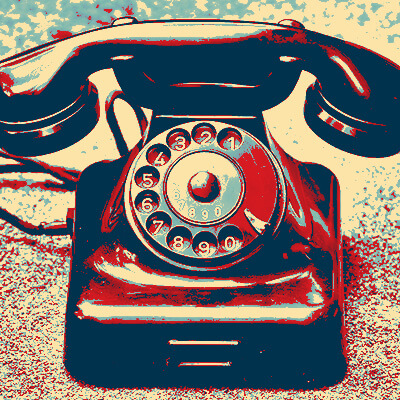It is comforting to know if you have technical problems there is a Hands On source to get help. These trainers listen to your problems, find solutions and work with you until you understand the solution, their patience is outstanding. This is a great way to not only solve problems but to learn about the ever-changing world of technology; there are class presentations, small group gatherings or one-on-one in your home with kind, friendly, people.
Need Help? Call Us.
877.201.3586
Cutting the Cable Cord: The Evolution of Streaming

A Very Brief History of Cable
As we begin our exploration of the options of cutting the cable cord, a quick look at the history of cable will provide a foundation on which to build the future.
This history is found in greater detail at the website for the California Cable and Telecommunications Association
- 1940s Cable Originated to Provide Signals to Remote Areas
- 1950s Cable Shifts from Transmission to New Content
- 1960s Nearly 800 Cable Systems Serving 850,000 Subscribers
- 1970s FCC Limited Movies, Sporting Events, and Syndicated Shows
- 1980s Deregulation Led to Rapid Growth
- 1990s Congressional Response to Increasing Cable Prices Opens Exclusive Programming to Other Technologies
- 2000s Cable Companies Testing Video on Demand and Interactive TV
Cable television had its start at almost the same time in Arkansas, Oregon, and Pennsylvania in 1948 by hobbyists working to enhance poor reception of over-the-air television signals in remote areas. In the late 1950s, cable operators began to take advantage of their ability to pick up broadcast signals from hundreds of miles away. Access to these distant signals began to change the focus of cable’s role from one of transmitting local broadcast signals to one of providing new programming choices to meet consumer demand as television became more widely available across America.
By 1962, nearly 800 cable businesses served 850,000 subscribers. Names we still recognize today, like Westinghouse, TelePrompTer, and Cox began investing in the business, complementing the early entrepreneurs Bill Daniels, Martin Malarkey, and Jack Kent Cooke. In the early 1970s, the FCC enacted regulations that limited the ability of cable operators to offer movies, sporting events, and syndicated programming. The freeze on cable’s development lasted until 1972, when a policy of gradual cable deregulation led to modified restrictions on the importation of distant signals.
Deregulation provided by the 1984 Cable Act had a strong positive effect on the rapid growth of cable services. From 1984 through 1992, the industry spent more than $15 billion on the wiring of America, and billions more on program development. This was the largest private construction project since World War II.
In 1992, Congress responded to cable price increases and other market factors with legislation that once again hampered cable growth and opened heretofore “exclusive” cable programming to other competitive distribution technologies such as “wireless cable” and the emerging direct satellite broadcast (DBS) business. In spite of the effect of the 1992 Act, the number of satellite networks continued their explosive growth, based largely on the alternative idea of targeting programming to a specific “niche” audience. By the end of 1995, there were 139 cable programming services available nationwide, in addition to many regional programming networks. By the spring of 1998, the number of national cable video networks had grown to 171.
As the new millennium got under way, cable companies began pilot testing video services that could change the way people watch television. Among these: video on demand, subscription video on demand, and interactive TV. The industry was proceeding cautiously in these arenas, because the cost of upgrading customer-premise equipment for compatibility with these services was substantial and required new business models that were both expansive and expensive.
Another Trip Down Memory Lane
Do you remember when you used pay phones when you were on the road? Paying for phone calls was a dime, then a quarter. Every home had the big phone books and yellow pages full of home and business addresses and phone numbers. Home and pay phones were how you communicated, and phone books kept track of the information you needed to reach others.
Now you have a device in your pocket or purse that is everything combined: pay phone, address book, and contacts! You can even search for a restaurant you’ve never tried and call them in a couple clicks! No more searching the pages of a big book.
to make sure everyone’s ready to go with their technology.
Remember waiting by the mailbox for the newest Sears catalog, and paging through the entire thing to study all of the amazing things? Everyone would circle what they wished for, or dog ear pages of items they were saving up for. If you were lucky, you could order something from the catalog and then wait in anticipation until the mailman delivered it to the door.
Now, the internet is your never-ending catalog and can be accessed on any device wirelessly, and your package could arrive by the end of the day!
Remember when cable was the next big thing to expand your television horizons with non-stop entertainment and news? But the drawbacks are many -- cable prices always seem to be increasing, the equipment is expensive to rent, and you get stuck in yearly contracts for shows you don’t even watch!
Now you have a lot of options, without equipment rental fees or rising channel prices. No contracts, which means you can quit or pick up new channels at any time, and you can get your programs anywhere! If you travel, live in two cities, or just want to watch on your favorite couch, you can do that now with the power of streaming channels and WiFi-enabled devices.
What is Streaming?
stream·ing /'stremiNG/
noun
noun: streaming; plural noun: streamings
1. Computing
a method of transmitting or receiving data (especially video and audio material) over a computer network as a steady, continuous flow, allowing playback to start while the rest of the data is still being received.
Getting Started
Get out the scissors and take a critical look at your cable bill. What are these HD technology fees and broadcast TV fees? The prices seem to keep going up, but the bills stay vague. Sometimes you pay for a 40 channel package, just so you can watch the Food Network, or see the Sunday game.
Although you can significantly reduce your monthly cable bill, you can’t completely say goodbye to your internet provider. Streaming shows and downloading them for travel does require a WiFi connection in your home. If you are interested in local news and sports, you can purchase a digital antenna to access local shows.
What Internet Speed Should You Have?
When you’re talking with your internet service provider, you should specify the speed of your connection. When you’re streaming video through your television, you need to know whether you have a High Definition (HD) TV, or a 4K, which is the newest. Then tell your internet service provider that you need the following:
HD - Minimum of 5 Megabytes per Second (Mbps) per device Recommended Speed >30Mbps
4K - Minimum of 25 Megabytes per Second (Mbps) per device Recommended Speed >50Mbps
Make a List of Must-Have Channels
One of the most enjoyable parts of cutting the cable cord is deciding which channels are important to keep. Do you watch Hallmark movies in December, or sports in the spring? Maybe you like to watch shows on nature or architecture. Make a list of what you must have if you cut cable. There are a lot of options, so having a list can help make decisions on which channels to try first!
Do you watch the major networks? ABC NBC CBS? Many of these stations are only available to certain zip codes, so check each streaming service to make sure the major network channels are offered in your area.
A new non-profit organization called Locast provides free internet access to ten local Denver channels in English and two in Spanish. This is not yet available in all markets, and you would need a Roku, Apple, or Android device to view the local channels through the television.
How Will You Watch?
Are you willing to watch your shows on your TV at home, computer, tablet, or phone? Try to expand your comfort zone. Although you might prefer your comfortable living room couch for daily viewing, it can be nice to pick up where you left off on a tablet when traveling.
Watching a show while cooking, or moving from one room to another, has never been easier! As long as you have WiFi, or data on a phone, you can watch your shows anywhere. Or you can still watch television in the living room by upgrading your TV with a streaming stick, or getting a new SmartTV.
Streaming Devices:
There are quite a few streaming devices now, and the cheapest solution for TVs is a small device like a streaming stick, as just mentioned. These plug in to your current TV and make it smart, or ready to stream.
Do you have an older TV without an HDMI port? Roku makes a model with component connections or you may need an HDMI to RCA adaptor.
If you have HDMI, there are cheaper streaming device alternatives like the Stick versions of Roku, Chromecast, or Amazon’s Firestick.
Some streaming services offer specials that include one of these devices with the prepaid purchase of a streaming package.
Sample Streaming Devices
| Device | Approximate Cost |
|---|---|
| Apple TV | $139.00 - $189.00 |
| Google Chromcast | $35.00 |
| Amazon Fire Stick | $29.99 - $79.99 |
| Ruku Ultra 4K | $29.99 - $79.99 |
Premium Channels
Premium channels such as HBO, Showtime, Starz and Cinemax have dozens to thousands of shows and movies, and you can change which channels you are subscribing to at any time. Try one out for a month, cancel it for a few months, and come back when your show has new episodes. If you don’t like the channel or its content, you can cancel it at anytime. You don’t have to give up your favorite shows when cutting cable!
Content Providers
Some of the most popular services are Netflix, Amazon Prime, and Hulu. Each provider has its pros and cons, but because contracts aren’t required, you could try one out for a very low fee and cancel it if you decide it isn’t for you. Netflix tends to “drop” full seasons of shows all at once and they’re commercial-free. Hulu, on the other hand, has commercials but offers more live TV options. Amazon is free if you are already an Amazon Prime member (free shipping with your Amazon account). All three options provide programming that you can only get from that service.
For example, Hulu created “The Handmaid’s Tale” and Amazon made “The Man in the High Castle.”
Cable Alternatives
Some popular cable alternatives include Sling, Fubo, DirecTVNow and YouTubeTV. Again, each has different channels and features, so making your list of must-haves can be very helpful when deciding which alternative to purchase. Depending on where you live, you may also purchase an antenna for local channels, and get those for free with your other cable alternatives.
These cable alternatives offer cloud-based DVR to record shows to view later. If you have an antenna service, you would need your own DVR box to record local programs.
| Cable Alternatives | Approximate Cost |
|---|---|
| Sling TV | $25/month |
| Fubo TV | $45/month |
| DirectTV Now | $35/month |
| YouTube TV | $40/month |
Hulu
- Watch Major Network Primetime TV - On Demand or Live
- Original content by Hulu
- Past Seasons of Network TV Shows - Food Network, Fox, ABC etc.
- New and Classic Movies
- Live TV Option to Watch Live Cable
- 50 hours of free Cloud DVR Recording (Hulu Live TV required)
Netflix
- Watch a Massive Library of Movies & Shows
- Original content by Netflix
- Past Seasons of TV Shows & Originals
- New and Classic Movies -- Largest Selection of New Movies
- No Live TV Option
- New Content Available Weekly
Amazon Prime Video
- Watch a Large Library of Movies & Shows
- Original content by Amazon
- New and Classic Movies -- Not all are free
- No Live TV Option
- Free already if you have Amazon Prime
To see which services might be best for you, take advantage of the free trials the companies offer. Just be sure to cancel the trial before the trial ends, and they begin to charge your credit card regularly.
| Provider | Trial Period |
|---|---|
| Hulu | 7 Days |
| Sling TV | 7 Days |
| DirecTV Now | 7 Days |
| Fubo TV | 7 Days |
| Netflix | 30 Days |
| YouTube TV | 30 Days |
Sling TV
| Package | Offering |
|---|---|
| Sling Blue | $25 |
| Sling Orange | $25 |
| Sling Blue + Orange | $40 |
Add-Ons: $5 a month
NBA TV - SEC Network - SEC Network+ - PAC 12 - ESPNU - ESPNEWS - NHL Network - beIN Sports - ESPN Goal Line - ESPN Bases Loaded - Stadium - Outside Television - Motorsport.tv
50 hrs of Cloud DVR for $5/month
Hulu Live TV
- $44.95/month
- Includes Basic Hulu Subscription
- 50 hrs of Cloud DVR FREE
- Stream 60+ top Live and On Demand TV channels including sports, news, and entertainment
Add-Ons:
| Provider | Price |
|---|---|
| HBO | $14.99 |
| Cinemax | $9.99 |
| Showtime | $10.99 |
| Starz | $8.99 |
DirectTV Now
4 Tiers for a More Customizable Experience
| Package | Price |
|---|---|
| Live A Little | $40/Month |
| Just Right | $55/Month |
| Go Big | $65/Month |
| Gotta Have It | $75/Month |
| Todo Y Mas | $45/Month |
Add-Ons:
| Provider | Price |
|---|---|
| HBO or Cinemax | $5.00/Month |
| Showtime or Starz | $8.00/Month |
20 Hours of Free Cloud DVR
2 Screens for Free
No Contract
YouTube
- $40 /month
- 6 Screens per Household
- Unlimited DVR Storage
- NBA League Pass & MLB.com Coming Soon!
- Not available on Amazon Fire
- Includes over 60 Channels
- Major Networks like AMC, Bravo, Fox, USA
Fubo TV
- $44.99 /month Fubo
- $49.99 /month Fubo Extra
- 80+ Channels on Fubo
- 100+ Channels on Fubo Extra
- 2 Screens per Household +option to add more
- 30 Hours of Free Cloud DVR Storage
- Widest Range of Sports Channels
- NBA League Pass $28.99
- Replay any Sports Game up to 3 Days after it Aired *even if you didn’t record it
- Showtime add-on $10.99
This Content is for Members Only!
Sign up to become a member and receive instant access. Become a Member Already a Member? Sign In !Client Reviews
GroovyTek did a great job! My trainer was on time, professional and she solved my slow computer. Great job, GroovyTek! I will use your services again.
Marcia F
I was so pleased to find GroovyTek. Although I am pretty tech savvy in some areas there are others where I need help. GroovyTek has helped me fill in that gap of information. I made an appointment to help me sync my devices and also help me learn how to organize my photos. The trainer was knowledgeable and able to explain things very clearly.
Natalie W
We have had several help sessions with a GroovyTek trainer. WE could not be more pleased. My trainer takes all our questions and while answering types up his answers so even after he leaves, we can refer to his notes. I would recommend GroovyTek to any of my friends or family without hesitation. BTW, ALL the employees at this firm are extrememly knowledgeable and friendly.
Tom D
Dear GroovyTek team, I thank you from the bottom of my heart for this very supportive and beneficial service you provide! I am so grateful!
Loretta J
I had a serious issue with my bank website not being secure. This was a very technical problem. I used the Remote Session option to get help. My GroovyTek trainer kept at it until we finally resolved the issue.
Jeff W
My tech is patiently bringing me (at age 79) into the computer age. I am so glad that I found him through GroovyTek. What a wonderful gift!
Judy K
Very impressed with my trainer’s ability to provide thorough explanations and demonstrations. I have confidence now in knowing how to manage my photos, videos, and documents. I received my money’s worth of valuable instruction.
Cheryl M
GroovyTek has helped me, a 65 year old, learn how to do all sorts of things on my computer that I did not know about before. I had no one else to ask, and they have rescued me. It's so great to have a polite, friendly, knowledgeable person come to my house and teach me. What a wonderful service!
Margie C
Spectacular people. Knowledgeable, professional, customer focused and easy to work with. I have used their services a couple of times (because I am over 40) and they are great to work with.
Jim H
Very pleased with the experience. Knowledgeable trainer who was most helpful. Highly recommend the service.
Michael M
My tech from GoovyTek has been terrific. He is patient, knowledgeable, and explains things really well. I enjoyed learning new tools and features on my smart phone and computer. They have made doing things a lot easier and more enjoyable.
Jennifer H
The trainers are so friendly, and helpful. They certainly have lots of patience and knowledge. They make you feel so comfortable asking questions you would not dare ask your family to show you again how to do. They are always welcome in my home, sometimes I hate to see them go!
Debera F
A wonderful service in every aspect from calling in to set up an appointment with GroovyTek and follow ups as well as the fabulous help, patience and expertise of the tech who came to the house to work with me with my computer issues. I would highly recommend GrooveyTek for all your computer needs! Thanks so much!
Jean G
I think your service is great! I have used it, and I booked 2 sessions for my 83-year old husband who bought himself a new Ipad, but didn't know how to use it. He's been ill, so it was a great help that you came to the house. Thanks for the service.









